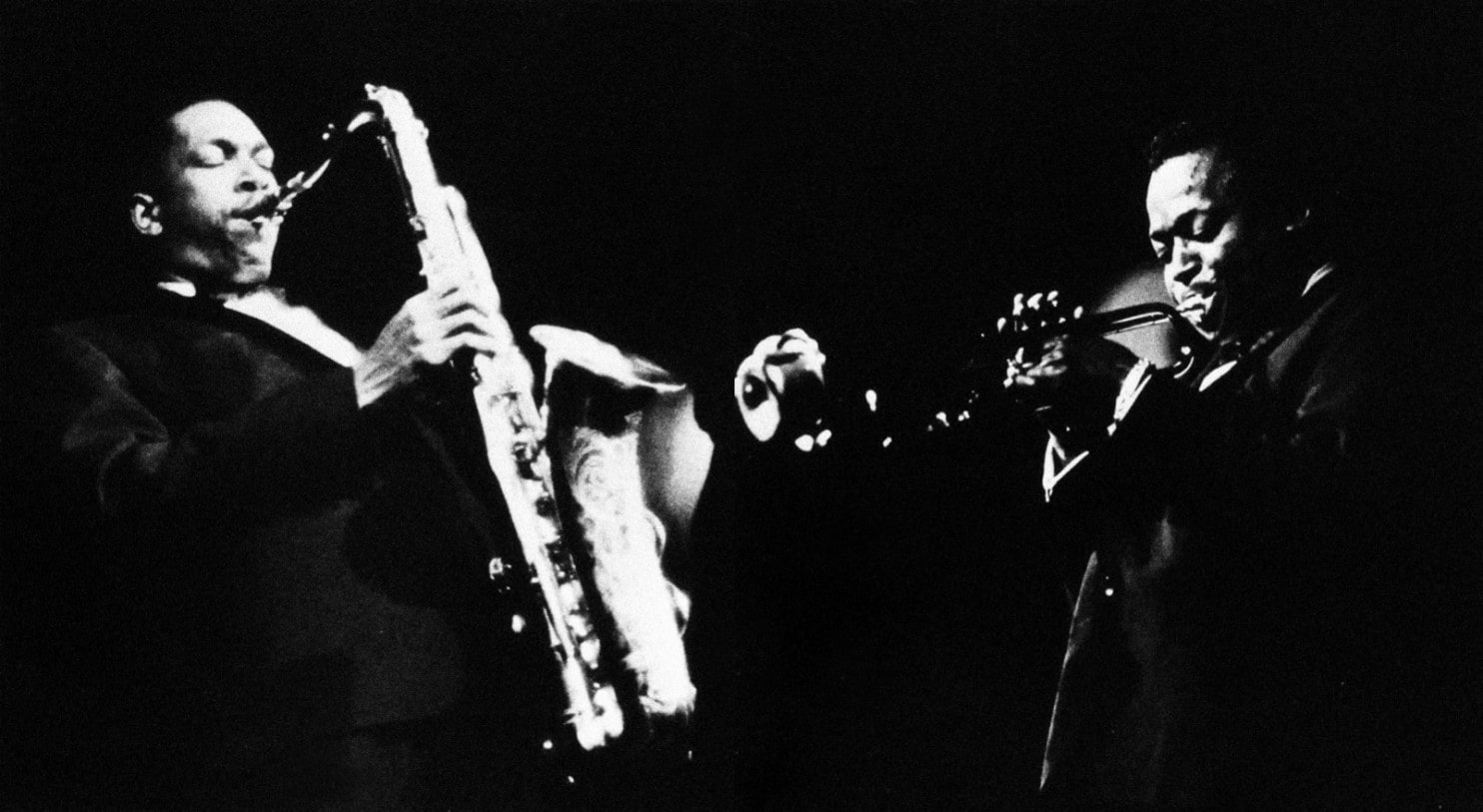By 1960, the John Coltrane and Miles Davis partnership was all but over. Coltrane’s solo career was kicking into gear with the first of his Atlantic LPs, while Davis had spent the 50s moving at light speed: Milestones, Kind of Blue, Sketches of Spain, all had him growing with leaps and bounds.

So, as the decade turned, the two were quickly establishing themselves as stars and not just in America. When jazz producer and legendary promoter Norman Granz booked Davis and his band for a tour of Europe in early 1960, it turned out to be a huge moment in both of their careers.
The new Columbia/Legacy release The Last Tour: The Bootleg Series Vol. 6 covers this run in detail.
The 1960 tour ran three full weeks, with shows in Sweden, West Germany, Austria and more, but this release focuses on five shows in four days: March 21, in Paris, March 22 in Stockholm and March 24 in Copenhagen. All were recorded by local public radio, which means they’ve survived with exceptional sound, but also that they’ve been heavily bootlegged over the years. With the exception of one track from a later show at The Hague on the 2008 reissue of Kind of Blue, this is the first time these shows have been officially released.

The first two discs include both sets of the show in Paris. In three lengthy tracks, Davis and his band stretch out on stuff they’d been steadily playing: “All of You,” “So What,” “On Green Dolphin Street,” “Walkin’,” and more. “So What” has the band building up to a nice crescendo while pianist Wynton Kelly takes an extended solo, while bassist Paul Chambers takes an interesting bowed solo on his bass near the end of “Green Dolphin Street.”
But, of course, the draw here is Davis and Coltrane, and throughout the Paris gig, they’re both standouts.
“So What” has a lengthy Coltrane solo where he twists and turns, the rhythm section pushing him on (he gets a nice response from the crowd, too). Davis, meanwhile, gets some nice moments in on disc two, when he takes an extended solo on “Bye-Bye Blackbird,” it just drips with a smoky, cool vibe.
The second disc also includes the show from Copenhagen, which opens with a jaunty “So What,” where Davis opens with a solo, with Coltrane following closely behind. While there’s a good 45 minutes of music here, with just three full performances – the finale cuts off incomplete – it’s over way too quickly.

Two shows from Sweden close out the set, and both are crackling with energy.
Personally, I think the first set has the choice moments: a slick solo from Kelly on “So What,” a sly solo from Davis on “Walkin’” where he uses a nice, full tone. But there’s a nice setlist variation at the end of the second show: “All Blues,” where Davis opens with a short solo, taking long, reflective blasts from his trumpet; Coltrane, meanwhile, takes a solo that builds up, his saxophone twisting and turning, sounding as if it’s trying to wrap around itself; he builds to a powerful climax, overblowing to get a husky, almost raspy tone. It’s interesting to hear the way Davis and Coltrane’s approaches to a solo could differ even during the same song.
Indeed, it stands out so much because the setlists don’t change much between the four discs. But even with a small songbook, it’s interesting to hear how things would change from night to night. Davis’ solos don’t repeat ideas, while Coltrane’s occasionally foreshadow them: as the liners point out, there are moments when you can hear snatches of ideas Coltrane would develop later on in the decade.
It’s interesting to look back and realize this wasn’t a tour about Davis and Coltrane.
Indeed, Coltrane wasn’t even the biggest draw on tenor: Stan Getz was a headliner, alongside Davis and pianist Oscar Peterson. But, as the liners point out, Coltrane was a huge beneficiary: not only did it introduce him to an international audience, but when Miles backed out of a televised gig in Germany, Coltrane got some major exposure as a bandleader of his own.

The next year, he’d start touring across Europe with his own band; not long after, Davis would start forming his own around Herbie Hancock, Tony Williams, Ron Carter and Wayne Shorter: the so-called second great quartet.
In sum, it’s nice to have this set. Both of them would make some great albums in the next decade, but neither were really quite on the same page after this tour: Davis increasingly became interested in grooves and rhythm, while by Interstellar Space, Coltrane dispensed with time signatures completely. And while they’re occasionally at odds here, it’s still a remarkable document of a once-in-a-lifetime tour. Recommended.


